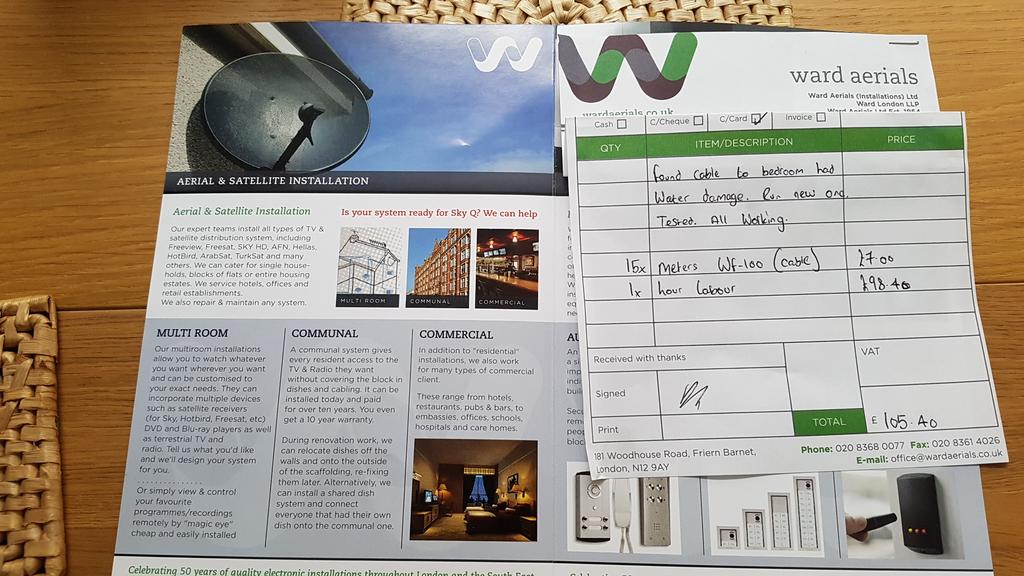Thanks for the video @Merlin5. Good eyes from @mmj_uk 
Blimey, air-spaced coax. All the air-spaced I come across is the old brown pre-digital 'low loss' stuff that I take down for a customer when installing a new aerial. Your stuff appears to have a white jacket, so I'm left wondering if this is early digital-era RG6 or CT100 before the designed changed to a solid foam dielectric.
Using air as the insulator is (or was) cheap and efficient, but the cell structure isn't strong (kinks too easily when bent), and as @mmj_uk mentioned, it lets water run down inside. It has a poor reputation for weak jacket strength, and the combination of a copper braid over an aluminium Mylar foil causes a bi-metal reaction as soon as there's moisture present. This means a crack or abrasion in the jacket which lets in water results in the cable corroding like a bugger. It doesn't help either that the centre core in a lot of this stuff was steel with a thin coating of copper. Hello brown water.
None of the decent aerial wholesalers I use bother with stuff like this. Standard RG6 is cheap enough and stands up to handling far better. However, there's stuff on Ebay, Amazon and at least a couple of the web/mail order consumer wholesale sites that sell it. I would imagine for a DIYer / builder / electrician who doesn't know better then maybe there's some appeal. Seems rather short-sighted though for an aerial installer to use unless they really are scraping the bottom of the barrel on price.
Get your installer to supply and fit Webro WF100 or Raydex CT100 or Philex PF100; then forget about cabling problems for the next 25 years.

Blimey, air-spaced coax. All the air-spaced I come across is the old brown pre-digital 'low loss' stuff that I take down for a customer when installing a new aerial. Your stuff appears to have a white jacket, so I'm left wondering if this is early digital-era RG6 or CT100 before the designed changed to a solid foam dielectric.
Using air as the insulator is (or was) cheap and efficient, but the cell structure isn't strong (kinks too easily when bent), and as @mmj_uk mentioned, it lets water run down inside. It has a poor reputation for weak jacket strength, and the combination of a copper braid over an aluminium Mylar foil causes a bi-metal reaction as soon as there's moisture present. This means a crack or abrasion in the jacket which lets in water results in the cable corroding like a bugger. It doesn't help either that the centre core in a lot of this stuff was steel with a thin coating of copper. Hello brown water.
None of the decent aerial wholesalers I use bother with stuff like this. Standard RG6 is cheap enough and stands up to handling far better. However, there's stuff on Ebay, Amazon and at least a couple of the web/mail order consumer wholesale sites that sell it. I would imagine for a DIYer / builder / electrician who doesn't know better then maybe there's some appeal. Seems rather short-sighted though for an aerial installer to use unless they really are scraping the bottom of the barrel on price.
Get your installer to supply and fit Webro WF100 or Raydex CT100 or Philex PF100; then forget about cabling problems for the next 25 years.


 ). They give a low-ball quote then bump the price up when on-site.
). They give a low-ball quote then bump the price up when on-site. 




